This article has been reviewed according to Science X's editorial process and policies. Editors have highlighted the following attributes while ensuring the content's credibility:
fact-checked
peer-reviewed publication
reputable news agency
proofread
Lavish tomb in ancient Spain belonged to a woman, not a man, new research shows
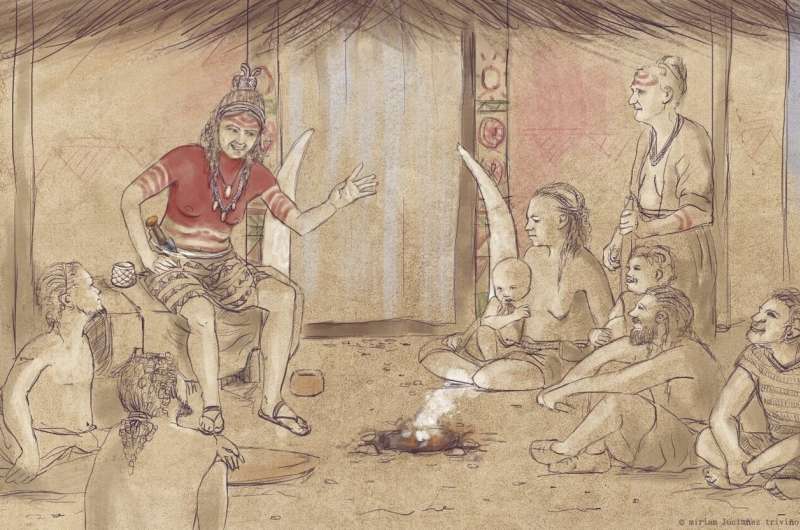
When archaeologists first discovered the 5,000-year-old ornate tomb in Spain, they assumed it was for a man. It held a rock crystal dagger, ivory tusks and other lavish items. But now they've determined the remains are those of a woman, and all it took was two teeth.
The researchers used a new method of determining sex that analyzes tooth enamel. This technique, developed about five years ago, is more reliable than analyzing skeletal remains in poor condition, according to their study published Thursday in the journal Scientific Reports.
Most details about the life of the "Ivory Lady," as researchers dubbed her, remain a mystery but there are some clues.
"She was buried alone in a tomb with very special artifacts," said Leonardo Garcia Sanjuan, a co-author and archaeologist at the University of Seville in Spain. "That shows that she was a special person."
The tomb is located a few miles west of Seville, near Spain's southern coast, and was excavated in 2008. Archaeologists thought it contained a young man based on an examination of the poorly preserved bones and the fact that several precious items found in the tomb—including ostrich eggshells and amber along with the tusks and dagger—indicated that the individual held a high social status.
The new technique detects differences in the chemistry of tooth enamel between males and females and can be used even when full DNA is not available.
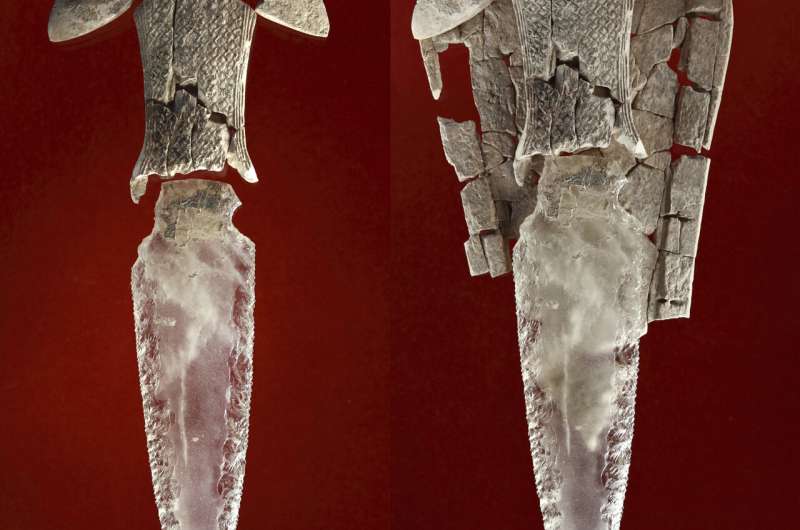
"This research provides one more piece of evidence questioning old historical narratives," said Alison Beach, an historian at the University of St. Andrews in Scotland, who was not involved in the study. It shows that "it's not exclusively true that men have always been the most revered or held the most authority."
Marta Cintas-Pena, a co-author and archaeologist at the University of Seville, maintains a database of Copper Age burials found at 21 different archaeological sites on the Iberian Peninsula, which includes Spain and Portugal. It currently has records for 1,723 individuals.
"The Ivory Lady's burial stands out, head and shoulders, above everyone else—there is absolutely no known male or female burial that compares to hers," said Garcia Sanjuan.
For around 250 years after the Ivory Lady's burial, newer graves were built around hers—but always with a 100-foot (30-meter) buffer zone, he said. And around 80 years after her death, people reentered her tomb and placed additional votive objects inside, including the crystal dagger.
-
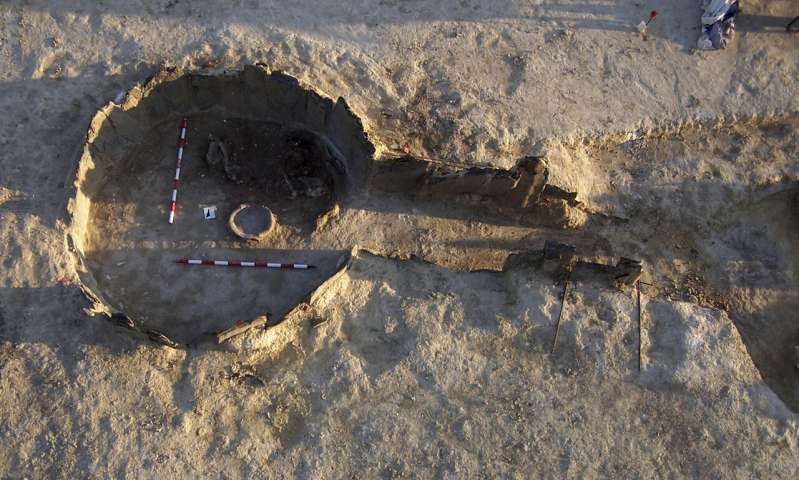
This photo provided by the ATLAS research group of the University of Seville in July 2023 shows a tomb in Valencina, Spain, dated between 3,200 and 2,200 years ago. When archaeologists first discovered the ornate tomb, they assumed it was for a man. But now they’ve determined the remains are those of a woman by analyzing tooth enamel, according to a study published Thursday, July 6, 2023, in the journal Scientific Reports. Credit: José Peinado Cucarella/ATLAS - University of Seville -
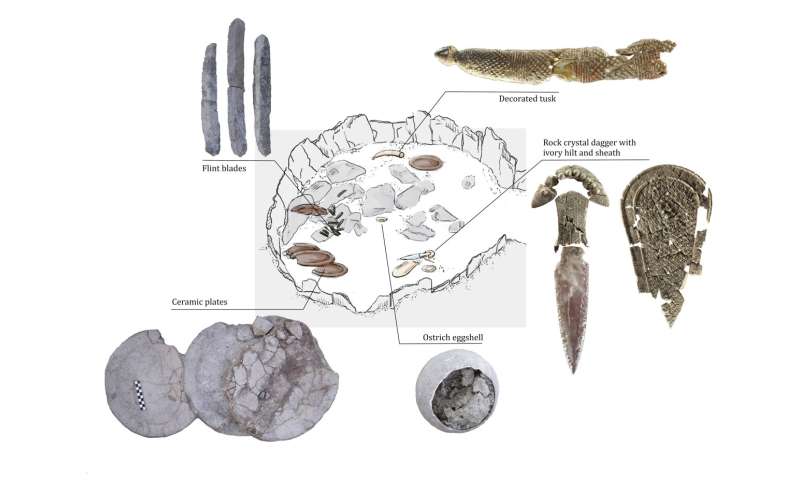
This image provided by the ATLAS research group of the University of Seville in July 2023 describes items discovered in a tomb in Valencina, Spain, dated between 3,200 and 2,200 years ago. When archaeologists first discovered the ornate tomb, they assumed it was for a man. But now they’ve determined the remains are those of a woman by analyzing tooth enamel, according to a study published Thursday, July 6, 2023, in the journal Scientific Reports. Credit: Miriam Luciañez Triviño/ATLAS - University of Seville -
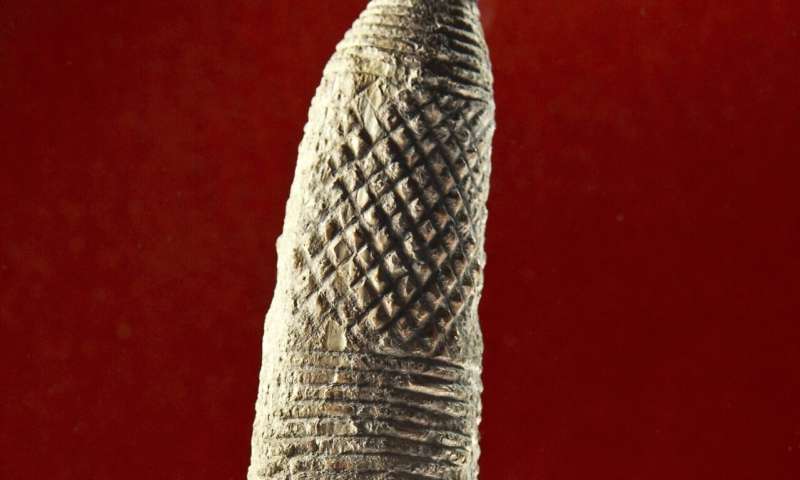
This photo provided by the ATLAS research group of the University of Seville in July 2023 shows a decorated ivory tusk discovered in a tomb in Valencina, Spain, dated between 3,200 and 2,200 years ago. When archaeologists first discovered the ornate tomb, they assumed it was for a man. But now they’ve determined the remains are those of a woman by analyzing tooth enamel, according to a study published Thursday, July 6, 2023, in the journal Scientific Reports. Credit: Miguel Ángel Blanco de la Rubia/ATLAS - University of Seville -
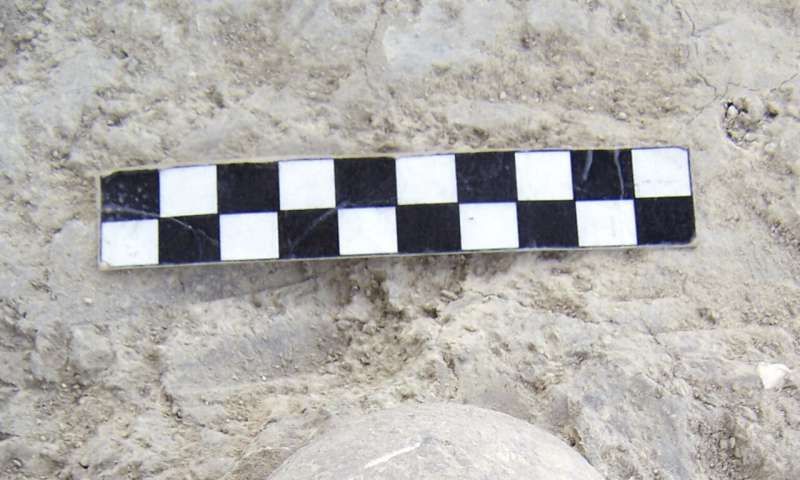
This photo provided by the ATLAS research group of the University of Seville in July 2023 shows an ostrich egg discovered in a tomb in Valencina, Spain, dated between 3,200 and 2,200 years ago. When archaeologists first discovered the ornate tomb, they assumed it was for a man. But now they’ve determined the remains are those of a woman by analyzing tooth enamel, according to a study published Thursday, July 6, 2023, in the journal Scientific Reports. Credit: Miguel Ángel Blanco de la Rubia/ATLAS - University of Seville
Researchers know little about the social or political structure of the society that she belonged to—which was roughly contemporaneous with the rise of the pharaohs in Egypt's Nile River Valley and with the construction of the first planned city on the banks of the Euphrates in Mesopotamia.
Katharina Rebay-Salisbury, a co-author and archaeologist at the University of Vienna in Austria, suspects the same misidentification might be true at other ancient tombs where researchers assumed, "Oh, this is a rich and prominent person, it must be a male."
Recently other researchers determined through DNA analysis that a decorated Viking warrior buried in Sweden was a woman, upending prior assumptions.
"If we go back and test, we will get a few more surprises," Rebay-Salisbury said.
More information: Marta Cintas-Peña et al, Amelogenin peptide analyses reveal female leadership in Copper Age Iberia (c. 2900–2650 BC), Scientific Reports (2023). DOI: 10.1038/s41598-023-36368-x
Journal information: Scientific Reports
© 2023 The Associated Press. All rights reserved. This material may not be published, broadcast, rewritten or redistributed without permission.



















